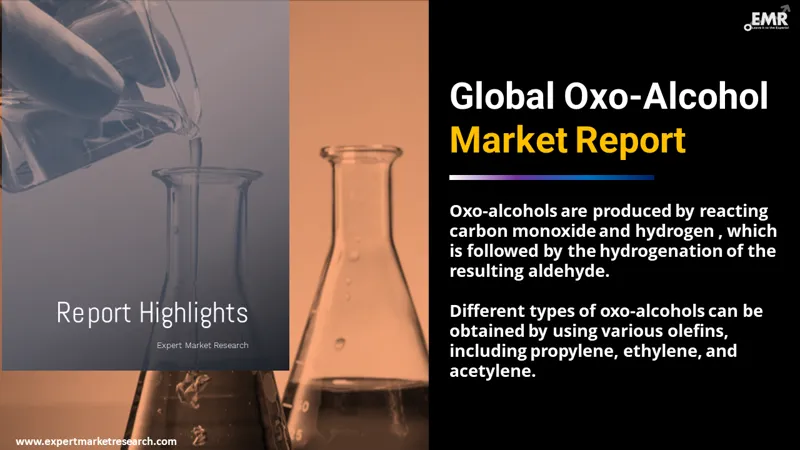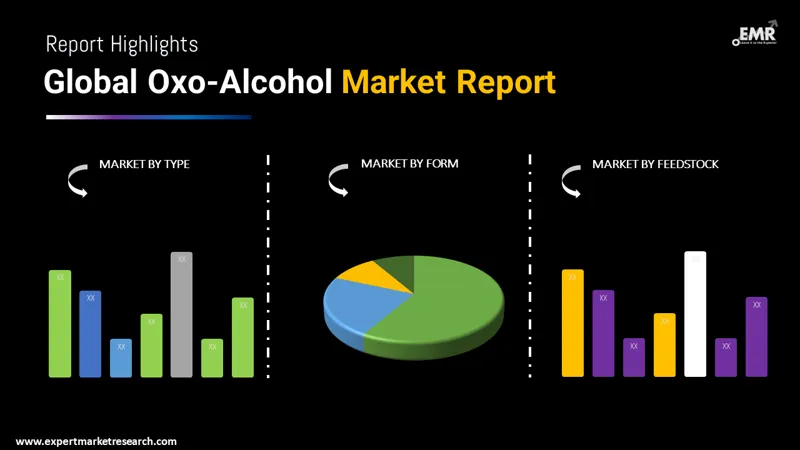
Consumer Insights
Uncover trends and behaviors shaping consumer choices today
Procurement Insights
Optimize your sourcing strategy with key market data
Industry Stats
Stay ahead with the latest trends and market analysis.
The global oxo-alcohol market reached a volume of nearly 9.34 Million Tons in 2025. The market is further expected to grow at a CAGR of 2.50% in the forecast period of 2026-2035, reaching a volume of 11.96 Million Tons by 2035.
Base Year
Historical Period
Forecast Period
Compound Annual Growth Rate
2.5%
Value in Million Tons
2026-2035
*this image is indicative*
The rising demand for oxo-alcohols in the production of adhesives, and paints and coatings, among others has been supporting the market growth. Oxo-alcohol as a paint additive helps in reducing viscosity and improving brush flow. The rising government investment in the development of public infrastructure is supporting the product demand in the construction sector. Furthermore, the rapid industrialisation and urbanisation are also expected to support the growth of the market. In addition, the rising demand for oxo-alcohol in the production of solvents, which find applications in printing inks and as an additive in cleaners and polishes is anticipated to support the market growth in the forecast years.

Read more about this report - REQUEST FREE SAMPLE COPY IN PDF
North America is anticipated to account for a significant share in the global market for oxo-alcohol. This can be attributed to growing demand for oxo-alcohol such as isobutanol as an additive blended into gasoline, which helps to reduce carburettor icing. It is also used as an automotive polish additive as well as an automotive paint cleaner additive. Meanwhile, the market in the Asia Pacific is expected to witness a considerable growth in the forecast period, with the heightened expansion of the manufacturing sector. This can be attributed to the rapid industrialisation and urbanisation and the growing investments by the leading market players in increasing their production activities in the region.
Oxo-alcohol is prepared by carbon monoxide (CO) and hydrogen (H2) followed by hydrogenation of the intermediate aldehyde. It is a clear liquid with mild odour and typically lies in the C3-C15 range. Various types of oxo-alcohols can be derived using different olefins such as propylene, ethylene, and acetylene.
By type, the market can be segmented into:
Based on the form, the market is categorised into:
Based on feedstock, the market is bifurcated into:
Market Breakup by Region

Read more about this report - REQUEST FREE SAMPLE COPY IN PDF
The market is being driven by the heightened demand for oxo-alcohol across end use industries. Oxo-alcohol finds increased usage in the production of plasticisers, which are chemical intermediates used to soften PVC to make it more pliable. PVC finds usage in the production of cables and wires, toys, and floorings, among others. Furthermore, the heightened application of oxo-alcohol as a lube oil additive to be used in the efficient lubrication of machinery and automobile components is also propelling the market growth. In the forecast period, the rapid urbanisation especially in emerging nations is anticipated to bolster the demand for oxo-alcohol based products such as paints, coatings, and adhesives. This can be attributed to the rising government expenditure in the construction sector to support housing projects and develop public infrastructure.
The report also covers the global import and export trends of popular product types (2-Ethylhexanol and n-Butanol), with China being the largest importer of both alcohol types while Germany and the United States being the largest exporter of 2-Ethylhexanol and n-Butanol, respectively.
The report gives a detailed analysis of the following key players in the global oxo-alcohol market, covering their competitive landscape, capacity, and latest developments like mergers, acquisitions, and investments, expansions of capacity, and plant turnarounds:
The comprehensive EMR report provides an in-depth assessment of the market based on the Porter's five forces model along with giving a SWOT analysis.




*While we strive to always give you current and accurate information, the numbers depicted on the website are indicative and may differ from the actual numbers in the main report. At Expert Market Research, we aim to bring you the latest insights and trends in the market. Using our analyses and forecasts, stakeholders can understand the market dynamics, navigate challenges, and capitalize on opportunities to make data-driven strategic decisions.*
Get in touch with us for a customized solution tailored to your unique requirements and save upto 35%!
In 2025, the global oxo-alcohol market attained a volume of nearly 9.34 Million Tons.
The market is projected to grow at a CAGR of 2.50% during the forecast period of 2026-2035.
The market is estimated to witness robust growth during in the forecast period of 2026-2035 to attain a volume of about 11.96 Million Tons by 2035.
The major drivers of the market growth include the growing demand from the paint and coating market, increasing utilisation as a feedstock for plasticizers, amino resin, and printing inks, and rising demand from the construction industry.
The key trends driving the growth of the market are the growing technological advancements and increasing mergers and acquisitions by the key players.
The major regions in the industry are North America, Latin America, the Middle East and Africa, Europe, and the Asia Pacific, with the Asia Pacific accounting for the largest share in the market.
2-ethylhexanol, n-butanol, and iso-butanol are the major product types in the market.
The major forms of the product include plasticizer and ethylhexyl acrylate.
The significant feedstock of the product are propylene and natural gas.
The major key players in the market are BASF SE, Exxon Mobil Corporation, Eastman Chemical Company, Ineos Oxide Ltd., and Grupa Azoty ZAK S.A., among others.
Explore our key highlights of the report and gain a concise overview of key findings, trends, and actionable insights that will empower your strategic decisions.
| REPORT FEATURES | DETAILS |
| Base Year | 2025 |
| Historical Period | 2019-2025 |
| Forecast Period | 2026-2035 |
| Scope of the Report |
Historical and Forecast Trends, Industry Drivers and Constraints, Historical and Forecast Market Analysis by Segment:
|
| Breakup by Type |
|
| Breakup by Form |
|
| Breakup by Feedstock |
|
| Breakup by Region |
|
| Market Dynamics |
|
| Competitive Landscape |
|
| Companies Covered |
|
| Report Price and Purchase Option | Explore our purchase options that are best suited to your resources and industry needs. |
| Delivery Format | Delivered as an attached PDF and Excel through email, with an option of receiving an editable PPT, according to the purchase option. |
Single User License
One User
USD 3,999
USD 3,599
tax inclusive*
Datasheet
One User
USD 2,499
USD 2,249
tax inclusive*
Five User License
Five User
USD 4,999
USD 4,249
tax inclusive*
Corporate License
Unlimited Users
USD 5,999
USD 5,099
tax inclusive*
*Please note that the prices mentioned below are starting prices for each bundle type. Kindly contact our team for further details.*
Flash Bundle
Small Business Bundle
Growth Bundle
Enterprise Bundle
*Please note that the prices mentioned below are starting prices for each bundle type. Kindly contact our team for further details.*
Flash Bundle
Number of Reports: 3
20%
tax inclusive*
Small Business Bundle
Number of Reports: 5
25%
tax inclusive*
Growth Bundle
Number of Reports: 8
30%
tax inclusive*
Enterprise Bundle
Number of Reports: 10
35%
tax inclusive*
How To Order

Select License Type
Choose the right license for your needs and access rights.

Click on ‘Buy Now’
Add the report to your cart with one click and proceed to register.

Select Mode of Payment
Choose a payment option for a secure checkout. You will be redirected accordingly.
Gain insights to stay ahead and seize opportunities.

Get insights & trends for a competitive edge.

Track prices with detailed trend reports.

Analyse trade data for supply chain insights.

Leverage cost reports for smart savings

Enhance supply chain with partnerships.

Connect For More Information
Our expert team of analysts will offer full support and resolve any queries regarding the report, before and after the purchase.
Our expert team of analysts will offer full support and resolve any queries regarding the report, before and after the purchase.
We employ meticulous research methods, blending advanced analytics and expert insights to deliver accurate, actionable industry intelligence, staying ahead of competitors.
Our skilled analysts offer unparalleled competitive advantage with detailed insights on current and emerging markets, ensuring your strategic edge.
We offer an in-depth yet simplified presentation of industry insights and analysis to meet your specific requirements effectively.
Share